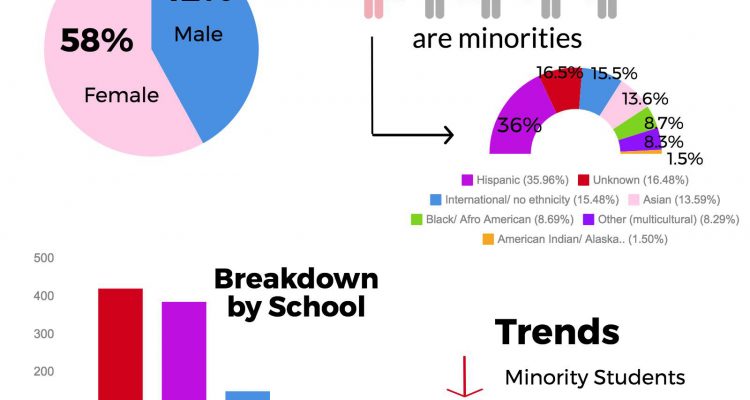As summer begins, the new freshman class prepares to enter Fairfield University with the same worries and apprehensions that all students face as they begin their college careers.
However, despite 2018 being a significant year for the University with the celebration of its 75th anniversary, the class of 2021 is smaller than class of 2020.
“The applicant pool was probably the largest that it’s ever been,” said Associate Director of the Office of Student Engagement Jeremy Kaler. “I think they had around 11,000 people apply for around 1,000 spots.”
However, in spite of the large applicant pool, the class consists of 1,025 members, in contrast with the class of 2020, which consists of 1,143 students.
Along with the decrease in class size, at the same time, there has also been a slight decrease in diversity. The class of 2020 had 20.82 percent minority students; the class of 2021 has 20.1 percent minority students.
According to Kaler, this percentage is historically typical for Fairfield.
“We have a fairly steady diversity applicant pool. There have been no major changes,” said Kaler.
“I think everybody hopes that we will see more [African, Hispanic, Asian and Native American] students in the coming year. Trends in admissions is that we will see more students of color and students with diverse backgrounds,” said Kaler. “Fairfield has invested heavily in making sure their transition to campus is successful.”
“Historically, it is sort of on-par,” Kaler continued. “We would love to see more students of color. How we do that is a whole other conversation. I think everybody would love to see more students of color to broaden our backgrounds and diversity of our student body.”
In addition to the diversity demographics changing, the ratio of females to males changed as well.
The percentage of females in the class of 2021 is the smallest of all four classes currently at Fairfield.
In the class of 2019, around 60 percent of the class is female, while approximately 40 percent is male. In the class of 2020, around 60 percent is female while approximately 40 percent is male. However, in the class of 2021, only 58 percent of the class is female, with 42 percent being male.
Kaler also commented on the fact that Generation Z is currently the generation with the most college students. As this generation is smaller than the Millennial generation, fewer high school students are applying to colleges. This, as well as the fact that many of the students who were accepted at Fairfield decided to attend other colleges explains the smaller class size.
In spite of some changes to the demographics of the incoming class, everybody can agree that it will be exciting to have a new class at Fairfield.
“We are very excited for [the class of 2021] to be here,” Kaler commented. “We are very much looking forward to what they can bring to Fairfield and what their legacy will be years from now.”


The author and the administrators quoted in this article are more concerned with gender ratio’s and skin color, rather than the quality of the student. Absolutely pathetic. Brainwashed liberal zombies. Fairfield you is Catholic and name only.
This is such utter nonsense. I cannot wait until the day these liberal nuthouses lose their Catholic affiliation. Thank the fact that women run the place (and society) for the discriminatory 58-42 reality. If it were the other way around, all the SJWs would be up in arms and raging like the intolerant weak-ones they continue proving themselves to be. Immasculization of society starts at places like this degree mill Fairfield University, to which I lament giving 6 years of my life (and tuition). Bad ideas, bad reasoning; agenda, progressive Left, intolerant and hate-filled brutes without a shred of scholarly ability.
PS. Teach me about my “white privilege,” and I will teach you how half a nation is waking up and arming themselves against your progressive disease. You don’t have long.